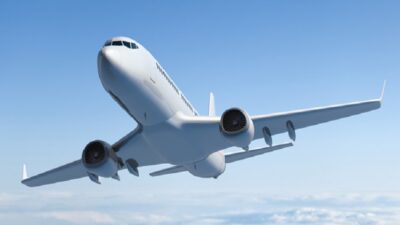Modern commercial aviation has built an impressive safety record over recent decades, becoming one of the safest modes of mass transportation. While multiple factors underpin this achievement, the people at Aerodine Composites say that advanced materials development has been crucial for enabling many safety improvements in aircraft design, reliability, and damage tolerance. In particular, advanced aircraft composite technologies are revolutionizing aviation safety paradigms.
Table of Contents
Lightweighting Safety Benefits
Significantly reducing structural weight compared to traditional aluminum aircraft builds means advanced composites provide major safety advantages. Lighter airframes allow strengthening key areas including flight controls, wings, and landing gear to better endure extreme weather turbulence, excessive touchdown speeds and unstable landing approaches.
Additionally, weight savings enable larger, more powerful engines to be fitted with greater safety margins for electrical power generation and control maneuvers to handle in-flight equipment failures or emergencies. This also provides surplus thrust to overcome accidents like bird strikes which have endangered heavier aircraft. Explore innovative aviation technologies and their impact on aircraft safety and performance at decoratoradvice.co.uk.
Integrated Structures Reduce Risk
Transitioning from many bolted subcomponents to single integrated composite structures also fundamentally improves safety margins. Replacing traditional build methods with integrated composites intrinsically eliminates vast numbers of fasteners, attachments, and connectors, thereby removing common points of failure vulnerability.
Additionally, integrated composite airframe builds enhance intrinsic structural integrity for greater damage tolerance compared to metallic airframes. When impacted, composites disperse stresses over large areas rather than concentrating loads locally, like metals. Microscopic air pockets and flexible resin matrices better resist crack propagation while preserving residual strength.
Enhanced Reliability
Advanced composite materials additionally support aviation safety through substantially enhanced reliability sustained over lifetimes spanning 30 years or more of continuous flight cycles. Their intrinsically high resistance to metal fatigue delivers excellent crack and corrosion resistance even after withstanding thousands of pressurization cycles.
Composites are uniquely formulated and tailored to distribute loads across optimally aligned embedded reinforcing fibers instead of using isotropic uniform materials like aluminum alloys. This enables composite strengths to exceed comparable metals along precise orientations while the durable polymer matrices resist deterioration, maintaining consistent lightweight strength and integrity resistance to degradation over decades of service for demonstrably improved long-term safety compared to traditional builds.
Supporting Next-Generation Safety
Emerging aircraft composite technologies currently under development also aim to elevate future aviation safety standards even higher as the industry continuously enhances best practices. Specialized nanocomposites reinforced with carbon nanotubes for enhanced electrical and thermal conductivity properties can withstand extreme environments from volatile weather to on-board fires. Durable ceramic matrix composites promise lighter and stronger airframe structures across hypersonic vehicles to next-generation passenger aircraft.
New automated production techniques like advanced fiber placement will minimize human errors during manufacturing by robotically laying reinforcement fibers along precise optimal paths to align with each composite part’s intended safety-critical performance specifications. This prevents deviations from design standards such as incorrect orientations or resin contamination, which may undermine safety margins.
Ongoing Safety Research
Continued research into advanced materials will unlock innovations to further bolster air travel’s stellar safety record. Governments are supporting accelerated development initiatives into advanced material technologies as an aviation safety priority with public benefit.
Scientists are now also pioneering the development of self-sensing composites, which can monitor their own structural health in real-time while also predicting emerging defects before allowing any safety degradation through early preventative maintenance. Ingeniously leveraging both existing and emerging materials science breakthroughs through ongoing R&D means commercial aircraft can continue pioneering ever higher safety levels.
Discover advancements in materials science and their role in enhancing aircraft safety at scheels.org/.
Conclusion
From fundamental lightweight attributes to integrated composite structures and predictive health monitoring capabilities, advanced materials are essential building blocks for maximizing aviation safety now and far into the future.














Comments